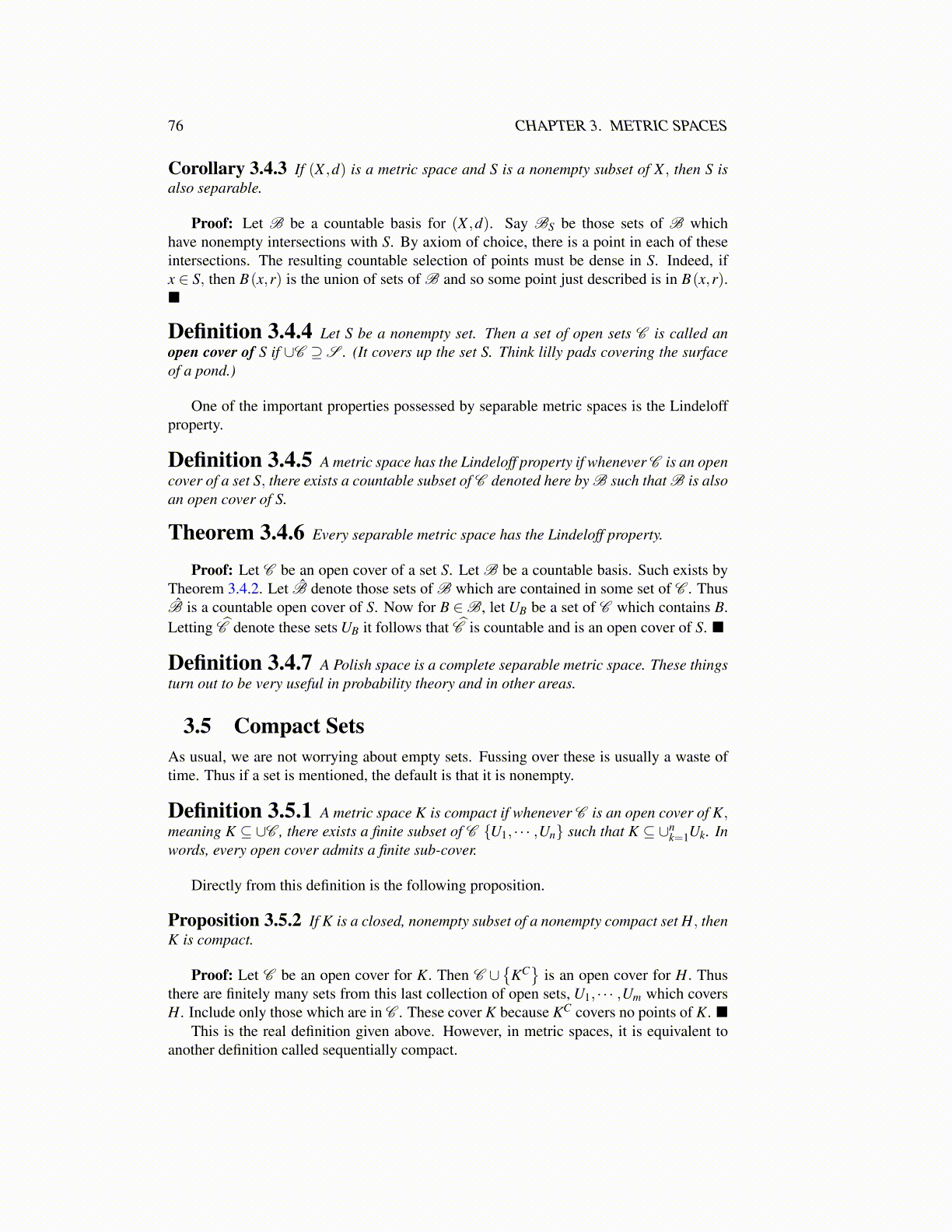
76 CHAPTER 3. METRIC SPACES
Corollary 3.4.3 If (X ,d) is a metric space and S is a nonempty subset of X , then S isalso separable.
Proof: Let B be a countable basis for (X ,d). Say BS be those sets of B whichhave nonempty intersections with S. By axiom of choice, there is a point in each of theseintersections. The resulting countable selection of points must be dense in S. Indeed, ifx ∈ S, then B(x,r) is the union of sets of B and so some point just described is in B(x,r).■
Definition 3.4.4 Let S be a nonempty set. Then a set of open sets C is called anopen cover of S if ∪C ⊇S . (It covers up the set S. Think lilly pads covering the surfaceof a pond.)
One of the important properties possessed by separable metric spaces is the Lindeloffproperty.
Definition 3.4.5 A metric space has the Lindeloff property if whenever C is an opencover of a set S, there exists a countable subset of C denoted here by B such that B is alsoan open cover of S.
Theorem 3.4.6 Every separable metric space has the Lindeloff property.
Proof: Let C be an open cover of a set S. Let B be a countable basis. Such exists byTheorem 3.4.2. Let B̂ denote those sets of B which are contained in some set of C . ThusB̂ is a countable open cover of S. Now for B ∈B, let UB be a set of C which contains B.Letting Ĉ denote these sets UB it follows that Ĉ is countable and is an open cover of S. ■
Definition 3.4.7 A Polish space is a complete separable metric space. These thingsturn out to be very useful in probability theory and in other areas.
3.5 Compact SetsAs usual, we are not worrying about empty sets. Fussing over these is usually a waste oftime. Thus if a set is mentioned, the default is that it is nonempty.
Definition 3.5.1 A metric space K is compact if whenever C is an open cover of K,meaning K ⊆ ∪C , there exists a finite subset of C {U1, · · · ,Un} such that K ⊆ ∪n
k=1Uk. Inwords, every open cover admits a finite sub-cover.
Directly from this definition is the following proposition.
Proposition 3.5.2 If K is a closed, nonempty subset of a nonempty compact set H, thenK is compact.
Proof: Let C be an open cover for K. Then C ∪{
KC}
is an open cover for H. Thusthere are finitely many sets from this last collection of open sets, U1, · · · ,Um which coversH. Include only those which are in C . These cover K because KC covers no points of K. ■
This is the real definition given above. However, in metric spaces, it is equivalent toanother definition called sequentially compact.